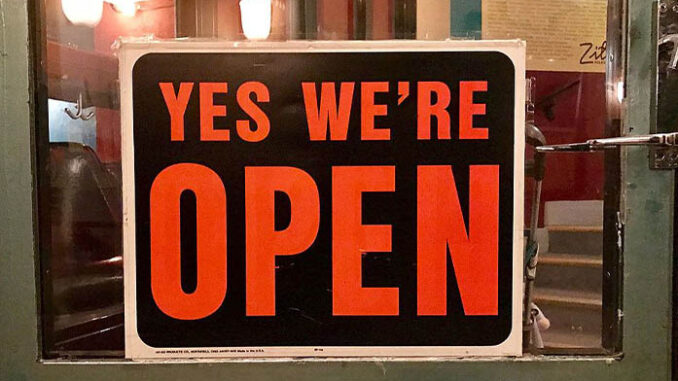
by Ethan Faverino | Oct 22, 2025 | Economy, News
By Ethan Faverino |
The U.S. Treasury and the Joint Economic Committee released the Monthly Fiscal Update last week, highlighting a 2.8% reduction in the federal deficit for Fiscal Year 2025 (FY2025), totaling $1.776 trillion compared to $1.828 trillion in FY2024.
The decrease was driven by record-setting tariff collections, increased tax receipts, and modifications to the student loan program approved in the 2025 reconciliation act.
September 2025 concluded with a notable surplus of $197.950 billion, reflecting strong fiscal performance with net outlays of $345.713 billion and net receipts of $543.663 billion for the month.
In FY2025, total federal net outlays reached $7.010 trillion, a 3.91% increase from $6.746 trillion in FY2024. Net receipts rose to $5.235 trillion, up 6.42% from $4.919 trillion in the prior fiscal year.
Despite the robust revenue growth, 25.33% of FY2025 outlays were not covered by revenues, resulting in the federal government spending $1.34 for every dollar received. The Congressional Budget Office (CBO) projects continued growth in outlays and receipts, forecasting net outlays of $7.294 trillion in FY2026, $7.622 trillion in FY2027, and $8.019 trillion in FY2028, with deficits projected at $1.713 trillion, $1.687 trillion, $1.911 trillion, respectively, over the same period.
Outlays by Category
Social Security remained the largest federal expenditure in FY2025, totaling $1.581 trillion (22.5%), followed by Income Security and Veterans Benefits at $1.079 trillion (15.4%), Medicare at $996.72 billion (14.2%), and Net Interest at $970.66 billion (13.8%).
Defense spending accounted for $868.41 billion (12.4%), while Medicaid outlays were $668.14 billion (9.5%). Foreign Aid and other outlays represented smaller shares, at $32.21 billion (0.5%) and $814.75 billion (11.6%), respectively.
Receipts by Category
Individual Income Taxes were the largest revenue source in FY2025, contributing $2.656 trillion (50.7%), followed by Social Insurance and Retirement Taxes at $1.748 trillion (33.4%).
Corporation Income Taxes added $452.09 billion (8.6%), while Customs Duties, boosted by record setting tariff collections, reached $194.87 billion (3.7%). Other receipts totaled $183.31 billion (3.5%).
Despite the deficit reduction, net interest payments on the national debt hit a record high of nearly $971 billion in FY2025, a $100 billion increase from FY2024. The Committee for a Responsible Budget projects that by 2051, interest payments will become the largest federal expense, surpassing Social Security.
Ethan Faverino is a reporter for AZ Free News. You can send him news tips using this link.

by Jonathan Eberle | Oct 20, 2025 | Economy, News
By Jonathan Eberle |
A new national analysis reveals that Arizona’s job market is holding steady, ranking 12th in the nation for job openings with a rate that mirrors the U.S. average.
According to a new report from Podium AI, which analyzed the latest data from the U.S. Bureau of Labor Statistics, Arizona’s job opening rate sits at 4.4%, matching the national average. That equates to roughly 149,000 available positions across the state—placing Arizona in a balanced middle ground between neighboring New Mexico (5.1%) and Utah (4.2%).
West Virginia tops the national rankings with the highest job opening rate in the country—6%, which is 36% above the national average. Despite its smaller population, the state reports around 46,000 open positions, a sign of a particularly tight labor market. Meanwhile, Washington State ranks lowest with a 3.7% job opening rate, 16% below the national average, though it still reports 142,000 job openings in total.
Arizona’s mid-tier ranking suggests a stable labor environment, neither overheated nor stagnant. Economists often view such alignment with national averages as a sign of balance between worker demand and supply.
The data may also reflect Arizona’s ongoing economic diversification. With growth in industries like manufacturing, logistics, and healthcare, employers are competing to fill specialized roles while maintaining steady hiring across service sectors. Nationally, the report identifies roughly 7.4 million job openings, translating to a 4.4% rate. But that average conceals deep regional differences.
Eric Rea, CEO and founder of Podium AI, said the results underscore the complexity of comparing job markets across states. “What really stands out is the contrast between smaller states like West Virginia and Maine, which are posting the highest rates, and much larger economies like California and Texas, which sit near the bottom,” Rea said.
“It’s not that California and Texas don’t have jobs—they have hundreds of thousands—but because their workforces are so large, those openings represent a much smaller share overall.”
Rea added that high job opening rates can reflect both strong demand for workers and challenges for employers struggling to find qualified staff.
“States like West Virginia and Maine may be experiencing tight labor markets where businesses are competing harder to attract workers,” he said. “That can create opportunities for job seekers, but it also puts pressure on employers to raise pay and improve benefits.”
For Arizona job seekers, the state’s alignment with the national average means steady opportunities across sectors but not the intense competition—or leverage—seen in smaller, high-demand states. With roughly 149,000 openings on the books, Arizona’s workforce remains in a healthy equilibrium—a sign of resilience in a national economy still recalibrating after pandemic-era labor shifts.
Jonathan Eberle is a reporter for AZ Free News. You can send him news tips using this link.

by Jonathan Eberle | Oct 19, 2025 | Economy, News
By Jonathan Eberle |
A new study shows that Arizonans are among the hardest-working Americans, with the state ranking third in the nation for longest average working hours.
The research, conducted by global executive search firm Keller, analyzed Bureau of Labor Statistics data from 2022 through 2024 to determine where U.S. workers are putting in the most time on the job. Across that three-year period, Arizona’s workforce averaged 116.43 annual hours worked, placing it just behind two other top-ranking states.
Breaking it down year by year, Arizonans logged 113.39 hours in 2022, 116.87 hours in 2023, and 119.01 hours in 2024, showing a steady upward trend in the state’s overall workload. A spokesperson for Keller noted that Arizona’s rapid population growth and expanding industries are key drivers behind the long hours.
“Arizona’s booming construction and healthcare industries, along with rapid population growth, have created sustained demand for longer workweeks,” the spokesperson said. “The Grand Canyon State’s workforce is balancing expansion in both service and industrial sectors.”
The findings underscore Arizona’s continued economic momentum, as the state has seen significant growth in sectors such as healthcare, logistics, and advanced manufacturing. Keller’s study highlights how workforce trends vary widely across the U.S., with some states showing shorter workweeks even as national labor participation remains steady.
The firm, which specializes in global recruitment and executive placement, said the results reflect broader economic and demographic shifts shaping local job markets.
Jonathan Eberle is a reporter for AZ Free News. You can send him news tips using this link.

by Ethan Faverino | Oct 16, 2025 | Economy, News
By Ethan Faverino |
The National Federation of Independent Business (NFIB) Small Business Optimism Index dropped 2 points in September to a score of 98.8, marking the first decline in three months.
Despite remaining above the 52-year average of 98, the dip reflects growing concerns among small business owners grappling with inflationary pressures, supply chain disruptions, and persistent labor shortages. The Uncertainty Index climbed 7 points to 100, making it the fourth-highest reading in over 51 years.
NFIB Chief Economist Bill Dunkelberg said, “Optimism among small business owners decreased in September. While most owners evaluate their own business as currently healthy, they are having to manage rising inflationary pressures, slower sales expectations, and ongoing labor market challenges. Although uncertainty is high, small business owners remain resilient as they seek to better understand how policy changes will impact their operations.”
In Arizona, small business owners echoed with national concerns: “Unfortunately, Arizona small business owners are facing the same sort of challenges we see in the national survey,” NFIB State Director Chad Heinrich said. “The ongoing labor shortage and inflationary pressures are giving small business owners pause in this economy. They’re focused on meeting their customers’ needs and retaining their workforce.”
Key findings from the September survey include:
- Inflation and Supply Chains: Inflation emerged as a significant issue, with 14% of owners citing it as their top business problem, up 3 points from August. A net 24% raised selling prices, up 3 points, and a net 31% plan to increase prices in the next three months, up 5 points. Supply chain disruptions impacted 64% of owners, a 10-point jump from August.
- Labor Market Struggles: 32% of owners reported unfilled job openings, unchanged from August. Of the 58% that are hiring or trying to hire, 88% faced a shortage of qualified applicants. A net 16% plan to create jobs in the next three months (up 1 point) is the highest since January 2025. Labor quality is tied with taxes as the top concern, cited by 18% of owners.
- Inventory and Sales: A net negative 7% viewed current inventory as “too low,” down 7 points—the largest monthly decline in the survey’s history. A net negative 7% reported higher nominal sales over the past three months, up 2 points, but a net 8% expect higher real sales volumes (down 4 points).
- Earnings and Investments: Actual earnings improved, with a net negative 16% reporting profit trends, up 3 points, and the highest since December 2021. Among those with lower profits, 33% cited weaker sales and 17% pointed toward material costs. Capital outlays remained steady, with 56% of owners reporting expenditures, primarily on equipment and vehicles.
- Financing Challenges: A net 7% reported tougher loan conditions, up 4 points and the highest this year. The average rate on short-maturity loans rose 8.8%. Regular borrowing increased, with 26% of owners reporting loans, up 3 points.
Despite these challenges, 57% of owners rated their business health as “good,” up 3 points, while 11% said “excellent,” down 3 points.
Taxes and labor quality tied as the top concerns, each cited by 18% of owners, while poor sales (10%) and government regulations (6%) remained notable issues.
Ethan Faverino is a reporter for AZ Free News. You can send him news tips using this link.

by Ethan Faverino | Oct 13, 2025 | Economy, News
By Ethan Faverino |
In a landmark victory for small businesses, Congress has made the 20% Small Business Tax Deduction, also known as Section 199A, a permanent qualified business deduction, ensuring long-term tax certainty for Main Street.
This critical provision allows small businesses to deduct up to 20% of their income, empowering mom-and-pop shops to grow, invest in their workforce, and play their part in giving back to the community.
The decision, signed into law by President Trump, averts a massive tax hike that would have impacted over 33 million small business owners nationwide at the end of 2025.
Making the Small Business Tax Deduction permanent changes the game for Main Street. The tax certainty provided by Congress ensures small businesses can thrive, hire more workers, and compete with larger corporations.
Since its introduction in 2017, the deduction has leveled the playing field for nine out of ten small businesses that file as pass-through entities. Recent NFIB surveys show growing confidence, with small business optimism reaching a five-month high.
The new tax law also includes pro-small business provisions, such as permanent extensions of the 2017 marginal tax rates, preventing up to a 4% tax hike for small businesses and employees.
Enhanced expense and depreciation rules under Section 179 and 168(k) enable business owners to confidently invest in growth, such as making large purchases. Additionally, increased reporting thresholds for IRS forms 1099-K, 1099-NEC, and 1099-MISC reduce paperwork burdens for businesses using platforms like Venmo or PayPal or engaging independent contractors.
The permanent estate tax exemption further supports owners looking to pass their businesses to the next generation or keep them locally owned.
National Federation of Independent Business (NFIB) State Director Chad Heinrich said, “An NFIB-commissioned study by EY found that the Small Business Tax Deduction will increase Arizona’s economic activity by more than $1.4 billion annually, resulting in the creation of 26,000 jobs each year. That means more, good-paying jobs for hardworking Arizonans.”
Ethan Faverino is a reporter for AZ Free News. You can send him news tips using this link.

by Jonathan Eberle | Oct 13, 2025 | Economy, News
By Jonathan Eberle |
A new study by Cinch Home Services has revealed that Arizona ranks among the top states in the nation for rising property values over the past decade, with home prices in the state increasing by more than 120% since 2015.
According to the analysis—which used Zillow’s Home Value Index to track average property prices between 2015 and 2025—Arizona ranks tenth overall, with an impressive 120.3% increase in average property value over the ten-year period. The state’s most dramatic growth occurred between 2021 and 2022, when home values surged 28.1% in a single year.
Arizona’s rise mirrors a broader national trend in which several western and southern states saw explosive growth during the early 2020s housing boom. The study found that many states experienced their steepest gains in the immediate aftermath of the COVID-19 pandemic when housing demand and home improvement projects spiked.
Leading the nation is Idaho, where property values jumped 156% over the decade—nearly doubling Arizona’s rate of growth. Utah followed with a 128.4% increase, while Washington, Florida, and Nevada rounded out the top five. Other high-growth states include Georgia, Tennessee, Maine, and New Hampshire, each seeing increases above 120%.
At the opposite end of the spectrum, Louisiana recorded the smallest increase in home values over the past ten years, at just 23.4%. A spokesperson for Cinch Home Services noted that the results highlight how local markets—not the national average—often drive housing trends.
“This study reveals something especially insightful: the housing market moves in local clusters as opposed to nationally,” the spokesperson said. “The biggest surprise was that between 2021 and 2022 saw the largest value jump across all states. One possible reason is that more people spent time at home in 2020 making improvements, then sold or reassessed their property’s value the following year.”
The spokesperson added that homeowners looking to boost their property’s worth should focus on “first impressions,” recommending improvements such as fresh landscaping, parking availability, or a new front door to enhance curb appeal.
Top 10 States for Property Value Growth (2015–2025)
- Idaho – 156%
- Utah – 128.4%
- Washington – 127.1%
- Florida – 125.3%
- Nevada – 124.4%
- Georgia – 122.5%
- Tennessee – 121.3%
- Maine – 121%
- New Hampshire – 120.7%
- Arizona – 120.3%
Jonathan Eberle is a reporter for AZ Free News. You can send him news tips using this link.






